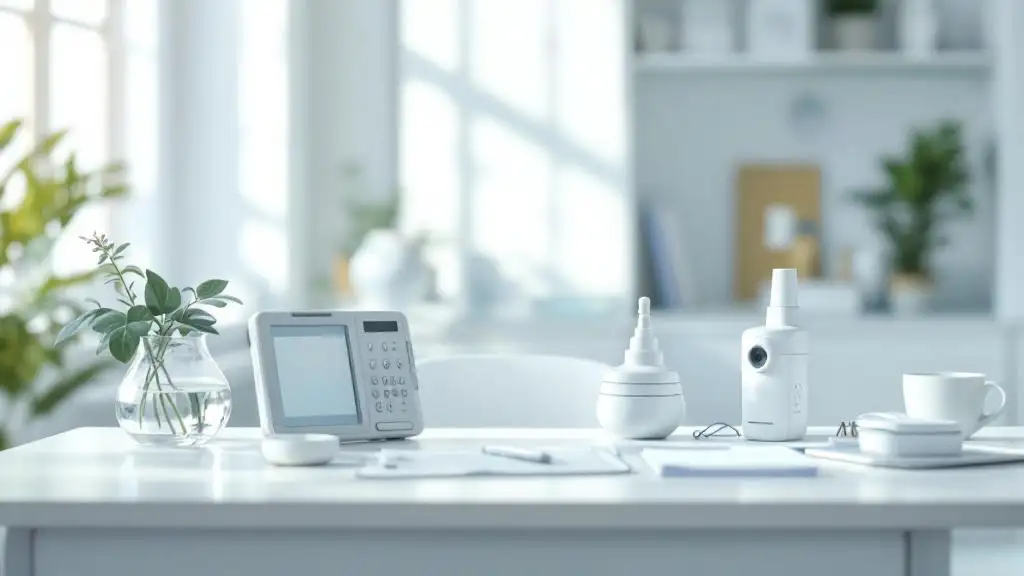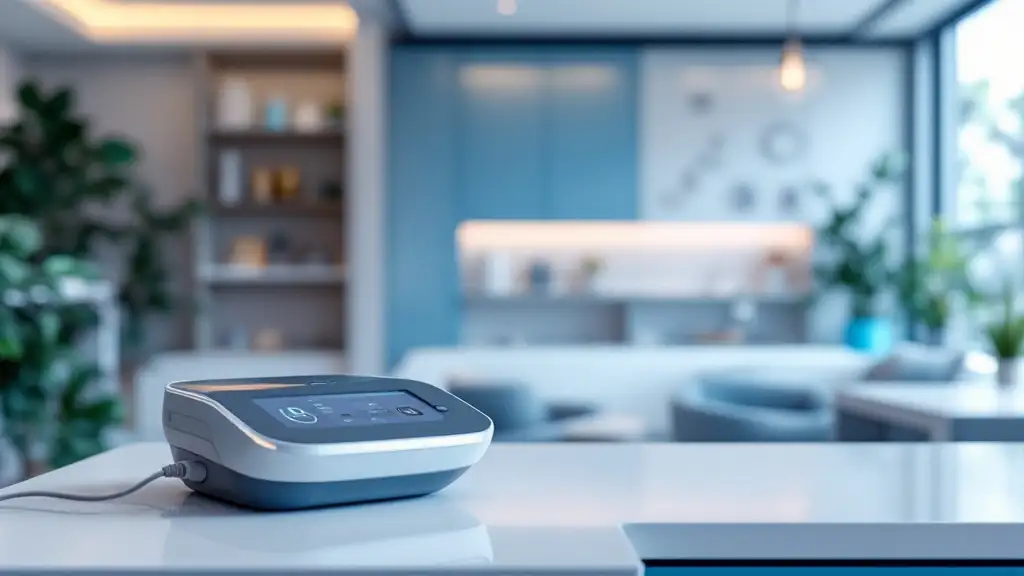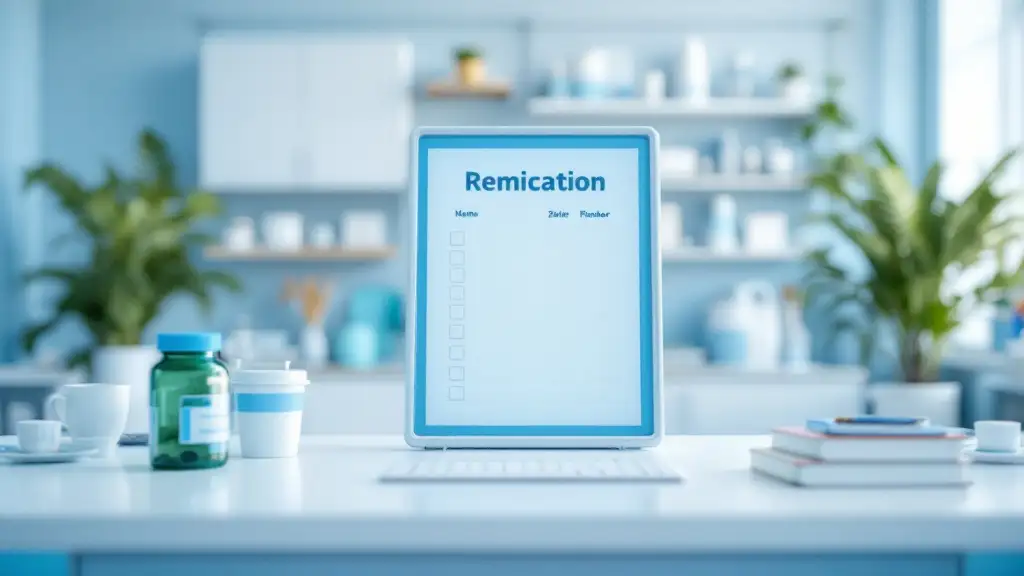Differentiating Postpartum Anxiety and Depression for Better Care
Postpartum mental health disorders such as anxiety and depression are common but distinct conditions that can affect new mothers. While they often occur simultaneously, their clinical features, symptoms, and underlying causes differ significantly. Recognizing these key differences is crucial for accurate diagnosis and effective treatment. This article explores the definitions, symptoms, causes, diagnosis, and treatment options for postpartum anxiety and postpartum depression, highlighting their unique profiles to support better understanding and care for new mothers.
Definitions and Core Features of Postpartum Anxiety and Depression
What are postpartum anxiety and postpartum depression, and how are they defined?
Postpartum anxiety and postpartum depression are mental health issues that can affect women after giving birth. Postpartum depression (PPD) is marked by ongoing feelings of deep sadness, hopelessness, and a lack of interest in usual activities. It often includes symptoms like sleep disturbances, changes in appetite, fatigue, and difficulty bonding with the baby, lasting for at least two weeks.
In contrast, postpartum anxiety involves persistent excessive worry, irrational fears, and physical symptoms such as rapid heartbeat, nausea, and feeling on edge. Women with postpartum anxiety might also experience obsessive thoughts, often related to fears about harming the baby, and may have trouble relaxing or sleeping.
While both conditions can occur together, they exhibit different primary symptoms—depressive symptoms dominate PPD, whereas anxiety symptoms are central in postpartum anxiety. Recognizing these differences is essential for appropriate treatment and support.
What are the key clinical features of each condition?
Postpartum Depression:
- Persistent sadness or hopelessness
- Loss of interest in activities
- Feelings of guilt or worthlessness
- Changes in sleep, appetite, or energy levels
- Difficulties bonding with the baby
- Thoughts of self-harm or harming the baby
- Fatigue and irritability
Postpartum Anxiety:
- Excessive worries about the baby’s health or safety
- Racing thoughts and inability to relax
- Physical symptoms like rapid heartbeat and nausea
- Obsessive behaviors such as repeatedly checking on the baby
- Feelings of panic, nervousness, or being on edge
- Sleep disturbances due to worries
Both conditions impact a mother’s ability to care for herself and her baby, but their primary emotional and physical manifestations differ.
Do postpartum depression and anxiety often occur together?
Research shows that postpartum depression and anxiety frequently co-occur. Many women with postpartum anxiety also show symptoms of depression, and vice versa. The specific rates of comorbidity vary, but studies indicate that about 75% of women with postpartum anxiety also experience depressive symptoms.
This overlap means many women experience a combination of mood disturbances, which can complicate diagnosis and treatment. Notably, anxiety symptoms often improve over time, while obsessive-compulsive behaviors can persist longer.
Screening tools like the Edinburgh Postnatal Depression Scale (EPDS) help identify women at risk. A higher score can indicate the presence of depression, anxiety, or both. Proper recognition ensures women receive tailored care, combining therapies like cognitive-behavioral therapy (CBT) and medication, which are effective in managing both conditions.
| Condition | Symptoms | Duration | Typical Onset | Common Treatments |
|---|---|---|---|---|
| Postpartum Depression (PPD) | Sadness, guilt, fatigue, loss of interest | Weeks to months, up to a year | Usually within 4 weeks after birth | Psychotherapy, antidepressants, support groups |
| Postpartum Anxiety (PPA) | Excessive worry, physical symptoms, intrusive thoughts | Can start immediately or months postpartum | Early postpartum or during pregnancy | CBT, support groups, medication (SSRIs) |
Understanding these distinctions and overlaps emphasizes the importance of comprehensive screening and personalized treatment strategies for new mothers experiencing mental health challenges after childbirth.
Clinical Features and Symptom Profiles

How postpartum depression manifests
Postpartum depression (PPD) presents with a spectrum of emotional and physical symptoms that tend to last longer and are more severe than the transient
Symptoms of Postpartum Anxiety
What are the common symptoms associated with postpartum anxiety?
Postpartum anxiety manifests through a variety of physical, emotional, and behavioral symptoms that can significantly impact a new mother's daily life.
Women experiencing this condition often report physical symptoms such as a rapid heartbeat, sweating, nausea, dizziness, shortness of breath, muscle tension, and sleep disturbances like insomnia or fragmented sleep. These physical signs are often accompanied by emotional and mental symptoms, including racing thoughts, obsessive fears, irritability, and a persistent sense of worry or nervousness.
Behaviorally, women might engage in avoidance of certain activities, become overly cautious, or check and recheck the baby's safety repeatedly. They may develop compulsive behaviors aimed at reducing anxiety, and experience irrational fears—such as concerns about harming the baby—that seem disproportionate to actual risks. Some also suffer panic attacks, which can include a sudden surge of intense fear, chest pain, or a feeling of losing control.
Common manifestations of postpartum anxiety include feeling constantly 'on edge,' difficulty relaxing, obsessive concerns about the baby's health, and a sense of impending dread. These symptoms may appear alone or alongside postpartum depression, and without treatment, they can persist for weeks or months.
Early recognition of these signs is crucial for effective management and to help new mothers regain a sense of calm and confidence in their parenting abilities.
Signs and Symptoms of Postpartum Depression
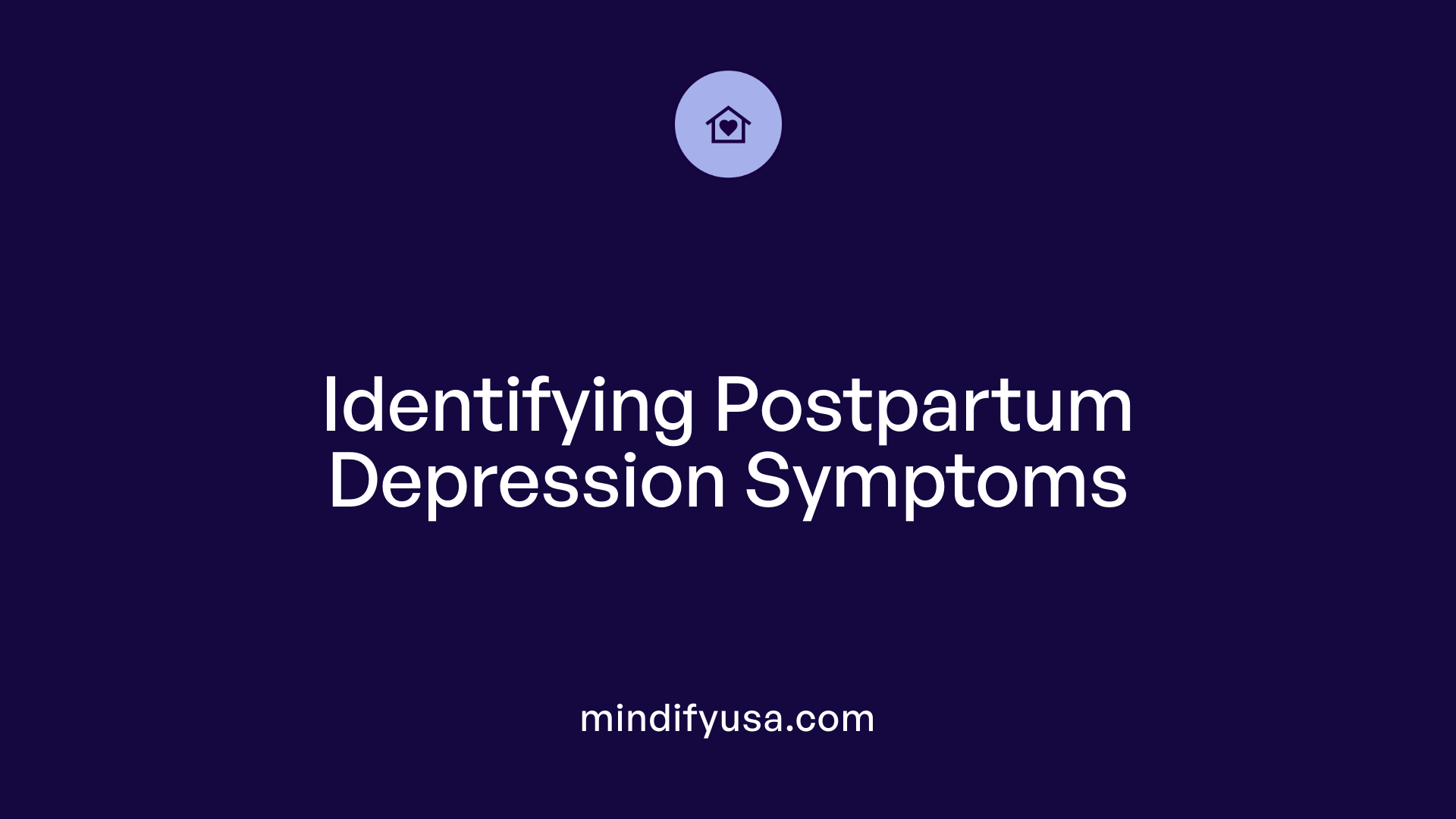
What are the signs and symptoms of postpartum depression?
Postpartum depression manifests through a variety of emotional and physical symptoms that significantly affect a new mother's well-being and her ability to care for herself and her baby. Emotionally, women often experience persistent feelings of sadness, hopelessness, worthlessness, and guilt. These feelings can be overwhelming and may be accompanied by mood swings, irritability, and heightened anxiety.
Many women report a loss of interest or pleasure in activities they previously enjoyed, as well as difficulty bonding with their newborn, which can impact early mother-infant relationships. Sleep disturbances are common, including insomnia or excessive sleeping, along with changes in appetite, which may include overeating or loss of appetite. Fatigue and a sense of physical exhaustion are frequently noted, making daily tasks seem insurmountable.
Cognitive problems such as trouble concentrating, making decisions, or remembering important details are also typical. In more severe cases, thoughts of harming oneself or the baby can occur; these require immediate medical attention. Unlike the temporary mood swings characteristic of baby blues—which generally resolve within two weeks—postpartum depression symptoms tend to persist for months if not properly treated, leading to impaired functioning.
Risk factors that increase the likelihood of postpartum depression include a personal or family history of depression, lack of emotional or social support, stressful life circumstances, pregnancy complications, and hormonal changes. Recognizing these symptoms early and seeking appropriate treatment can significantly improve outcomes and help mothers recover more fully.
Causes, Risk Factors, and Biological Influences
What are known causes and risk factors for postpartum anxiety and depression?
Postpartum anxiety and depression are complex conditions rooted in a combination of biological, psychological, and social factors. One of the primary biological influences involves hormonal fluctuations following childbirth. Rapid drops in hormones like estrogen and progesterone within 24 to 48 hours after delivery can significantly contribute to mood disturbances. Women whose brains are sensitive to these hormonal changes may be more prone to developing these mood disorders.
Genetic predisposition is also a crucial element. A personal or family history of mental health conditions such as depression, anxiety, or bipolar disorder greatly increases the risk. Studies have shown a shared genetic vulnerability, though postpartum depression (PPD) tends to have higher heritability in the early postpartum period, suggesting some unique genetic influences.
Psychosocial stressors further heighten the risk. These include lack of social support or a supportive partner, stressful life events, financial pressures, and difficult or traumatic birth experiences. When a mother faces pregnancy complications, health issues with the infant, or experiences pregnancy or infant loss, her susceptibility to anxiety and depression increases.
Sleep deprivation and the stress of caring for a newborn—especially during episodes of crying, sickness, or feeding problems—can exacerbate feelings of being overwhelmed. Additionally, factors such as unplanned pregnancies, low socioeconomic status, and previous exposure to trauma or mental health issues act as significant risk factors.
Other biological mechanisms include changes in neurotransmitter systems, notably serotonin and GABA, and neural response patterns involving the amygdala, which are involved in emotion regulation. These neural adaptations, combined with environmental stressors, influence the development of postpartum mood disorders.
Understanding these causes helps in early identification and intervention, highlighting the importance of screening and support for at-risk women during and after pregnancy.
Diagnosis and Screening Approaches
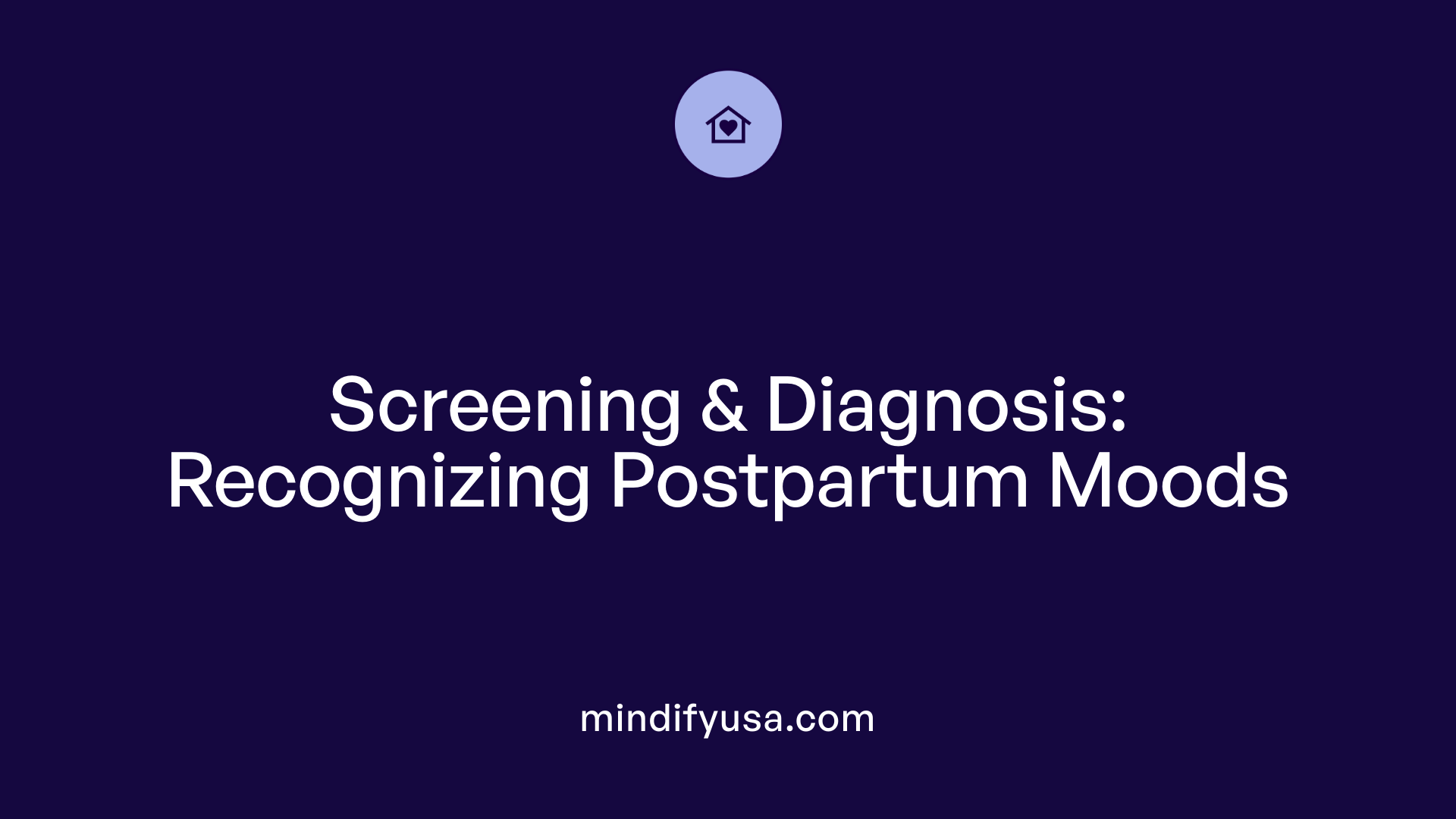
How are postpartum anxiety and depression diagnosed?
Postpartum anxiety and depression are primarily diagnosed using a combination of clinical evaluations performed by healthcare professionals. These evaluations include detailed health histories, physical examinations, and standardized screening tools. One of the most commonly used instruments is the Edinburgh Postnatal Depression Scale (EPDS), which helps quantify the severity of depressive symptoms.
Because there are no specific laboratory tests for postpartum mental health disorders, diagnosis depends on recognizing characteristic symptoms such as persistent sadness, irritability, anxiety, mood swings, fatigue, sleep disturbances, and feelings of worthlessness. These symptoms typically need to last for at least two weeks and significantly interfere with daily functioning or bonding with the baby.
Clinicians also evaluate the impact of symptoms on mother-child interactions and assess for related conditions like bipolar disorder, OCD, or postpartum psychosis if suspicion arises. Blood tests may be performed to exclude other medical causes of mood disturbances, such as thyroid dysfunction.
Screening during pregnancy and after childbirth is crucial, as early detection facilitates timely treatment. Healthcare providers often combine patient self-reports with clinical judgment to make an accurate diagnosis, ensuring that both depression and anxiety symptoms are addressed appropriately. Recognizing these disorders early can lead to better outcomes for mothers and their infants.
Treatment and Management Strategies
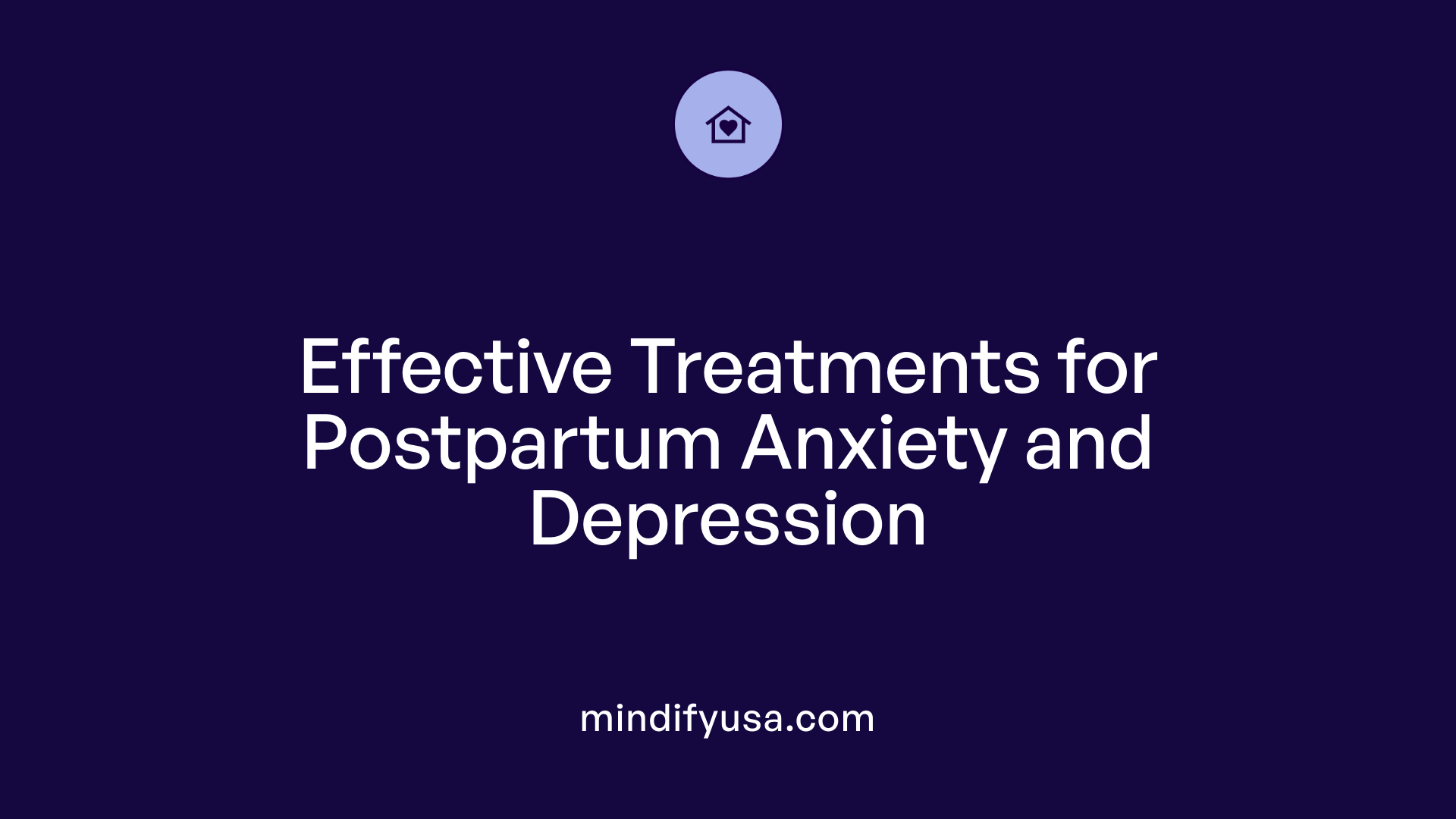
What are effective treatment options for postpartum anxiety and depression?
Addressing postpartum anxiety and depression requires a comprehensive approach tailored to each woman’s specific needs. Evidence-based psychological therapies are typically the first line of treatment, providing safe and effective methods for managing symptoms. Cognitive-behavioral therapy (CBT) is particularly effective in helping women identify and modify negative thought patterns, develop healthier coping strategies, and reduce anxiety and depressive symptoms.
Interpersonal therapy (IPT) is another valuable option, focusing on improving relationships, communication, and social support—all of which are crucial during the postpartum period. Psychodynamic psychotherapy can also help women explore underlying emotional issues contributing to their mood disturbances.
Support groups provide peer connection and shared experiences, which can lessen feelings of isolation and foster emotional resilience.
When medications are necessary, selective serotonin reuptake inhibitors (SSRIs) like sertraline or paroxetine are often prescribed due to their safety profiles during breastfeeding. These medications can effectively alleviate symptoms, especially in moderate to severe cases.
In addition to psychotherapy and medication, lifestyle modifications play an important role. Regular physical activity, adequate sleep, a balanced diet, and strong social support networks can significantly influence recovery. Practicing self-care, setting realistic expectations, and seeking help early enhance treatment outcomes.
Overall, managing postpartum anxiety and depression involves a multidisciplinary approach, emphasizing early detection, personalized treatment plans, and ongoing support to promote maternal well-being and healthy mother-infant bonding.
Distinguishing Postpartum Disorders from Baby Blues and Psychosis
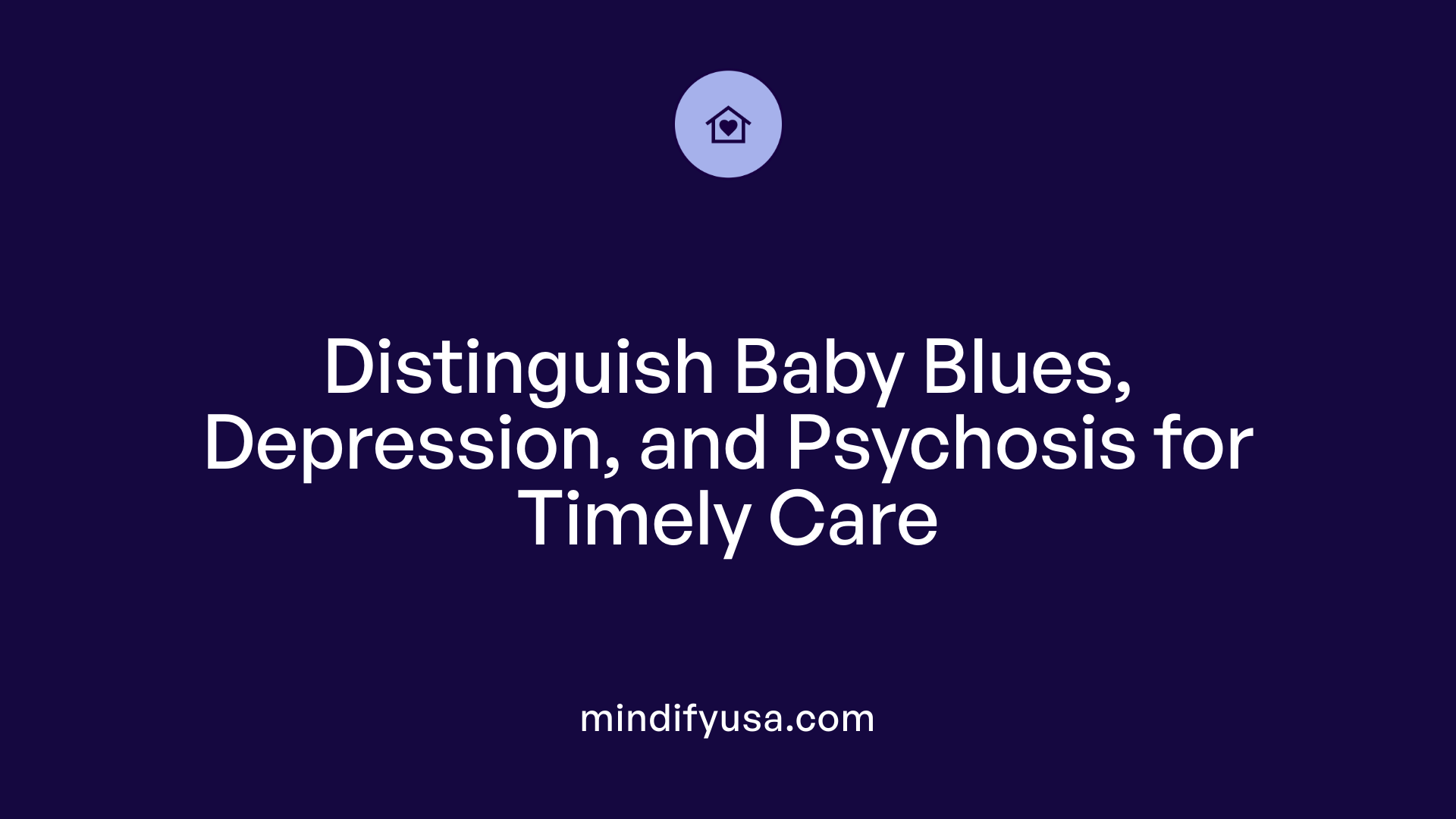
How can postpartum mental health disorders be distinguished from baby blues?
Postpartum baby blues are very common and affect up to 80% of new mothers. They generally start within the first 2 to 3 days after childbirth and last no longer than two weeks. Symptoms include mood swings, irritability, crying, anxiety, fatigue, and feeling overwhelmed. These symptoms are mainly caused by hormonal fluctuations, especially sudden drops in estrogen and progesterone, and are temporary. Importantly, baby blues do not typically interfere significantly with a mother’s daily functioning.
In contrast, postpartum depression is more severe and lasts longer. It often begins within the first few weeks postpartum but can develop up to several months later. Symptoms include persistent sadness, feelings of worthlessness, difficulty bonding, withdrawal from loved ones, and intrusive thoughts about harming oneself or the baby. These symptoms impair daily activities and may require treatment. The main differences lie in severity, duration, and impact, with postpartum depression needing clinical intervention.
What are the key features of postpartum psychosis, and why is it a medical emergency?
Postpartum psychosis is a rare but critical psychiatric emergency affecting about 1.5 per 1,000 mothers. Its symptoms develop rapidly and include hallucinations, disorganized thoughts, profound confusion, paranoia, rapid mood swings, agitation, and sometimes suicidal or homicidal thoughts, particularly involving the baby.
Women experiencing postpartum psychosis are often disconnected from reality and might display hyperactivity or insomnia. Due to the high risk of harm to both the mother and the infant, postpartum psychosis requires immediate hospitalization and medical treatment.
Treatment typically involves antipsychotic medications, mood stabilizers like lithium, and supportive care in a psychiatric unit. Early recognition and prompt intervention are essential for the safety and health of both mother and baby. This condition is much more severe than baby blues and postpartum depression, and swift medical attention can be lifesaving.
| Disorder Type | Typical Symptoms | Duration | Impact | Urgency |
|---|---|---|---|---|
| Baby Blues | Mood swings, crying, fatigue, anxiety | 1-2 weeks | Mild, brief | Not urgent, reassurance and support suffice |
| Postpartum Depression | Sadness, worthlessness, difficulty bonding | Weeks to months | Significant impairment | Medical treatment needed |
| Postpartum Psychosis | Hallucinations, confusion, paranoia, rapid mood swings | Rapid onset, can be days | Severe, risk to life | Immediate medical emergency |
Proactive Approaches to Perinatal Mental Health
Distinguishing between postpartum anxiety and depression is essential for effective treatment and support. Both conditions can profoundly impact mothers and their children if unrecognized or untreated. Early screening, understanding symptom differences, and seeking appropriate therapeutic and medical interventions can lead to significantly better outcomes. Support from healthcare providers, family, and community resources is critical in promoting recovery and well-being in the postpartum period. Recognizing and addressing these mental health issues early is a vital step toward nurturing healthier mothers and happier families.
References
- Is It Postpartum Depression or Postpartum Anxiety? What's The ...
- Postpartum Anxiety: Causes, Symptoms, Diagnosis & Treatment
- The Difference Between Postpartum Anxiety and ... - Happiest Baby
- Postpartum depression - Symptoms and causes - Mayo Clinic
- Postpartum depression | March of Dimes
- Perinatal Depression - StatPearls - NCBI Bookshelf
- Postpartum Blues vs Postpartum Depression
- The Difference Between Postpartum Anxiety, OCD and Psychosis
- Is Postpartum Depression Different From Depression Occurring ...
- Postpartum Depression vs. Baby Blues - UPMC HealthBeat











